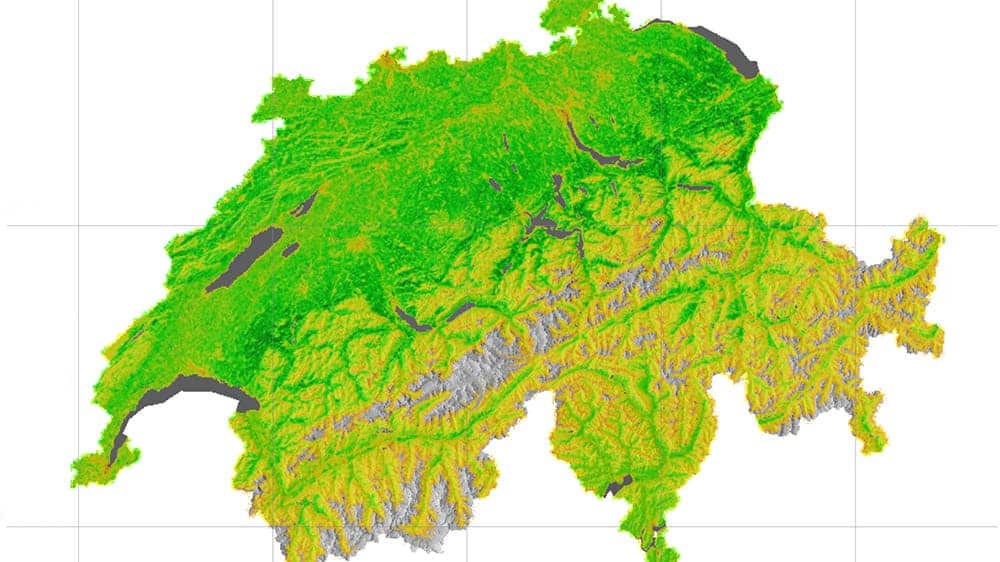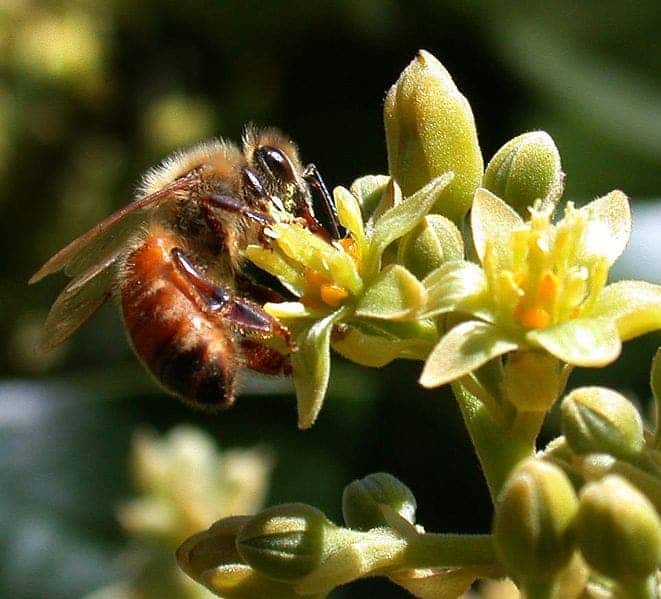A new study gives us additional reasons to protect biodiversity.

Switzerland from a satellite perspective: The vegetation’s average biomass production (orange: low, green: high) is strongly increased in landscapes with high biodiversity. (Figure: UZH).
Worldwide, we’re losing biodiversity at an alarming rate — we’re destroying it, to be more precise. In case you weren’t aware, there’s an ongoing massive extinction going on right now, largely caused by human activities (direct or indirect). The current rate of extinction of species is estimated at 100 to 1,000 times higher than natural background rates and many biologists expect this extinction to be on the same scale as the K-Pg event that wiped the dinosaurs.
With that in mind, researchers from the University of Zurich analyzed 450 landscapes harboring 2,200 plants and animal species. They wanted to see how the loss of species affects environments, especially environments important for humans. It’s long been known that more diverse environments are generally more resilient in the face of change, but previous studies mostly focused on a few random species or ecosystems. Still, even so, it was generally accepted that species-rich environments produce more and have more biomass than their less diverse counterparts. Now, Zurich scientists wanted to put it all into perspective with areas on which humans rely on.
They studied satellite data from Switzerland. They first learned that growing period increased in length throughout the last 16 years, likely due to the impact of climate change. Then, they compared how ecosystems fared against climate change and demonstrated what was already suspected: the more diverse the ecosystem, the more robust it is.
“Our results show that biodiversity plays an essential role for the functioning of extensive natural landscapes that consist of different ecosystem types such as forests, meadows or urban areas”, study leader Pascal Niklaus from Department of Evolutionary Biology and Environmental Studies says.
Even under massive variation of environmental parameters (such as rainfall, topography, solar irradiation), the dominant driver for resilience was still biodiversity. So if we want to protect nature’s wildlife — or better put, if we want to enable them to protect themselves — we should keep them as diverse as possible.
“This indicates that landscapes with high biodiversity can adapt better and faster to changing environmental conditions,” Niklaus concludes.
This is also not just important for wildlife, but for us as well. Humankind benefits in a multitude of ways from all kinds of ecosystems, through what is conventionally called environmental services. These services are regularly involved in the provisioning of clean drinking water and the decomposition of wastes, as well as in agriculture. They can be very hard to quantify, but they provide important and tangible economic benefits.
Journal Reference: Jacqueline Oehri, Bernhard Schmid, Gabriela Schaepman-Strub, and Pascal A. Niklaus. Biodiversity promotes primary productivity and growing season lengthening at the landscape scale. Proceedings of the National Academy of Sciences. September 4, 2017. DOI: 10.1073/pnas.1703928114










